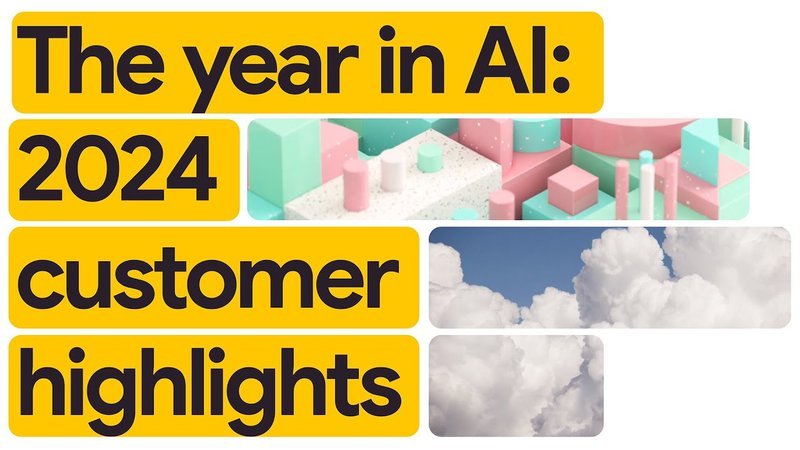On the smartchain: How Web3 and gen AI make each other better

Matt A.V. Chaban
Senior Editor, Transform
Jeremy van der Heiden
Contributing Writer
Datacurve founder Aman Johar has worked on gen AI and Web3 startups for much of the past decade. In this interview, he shares what each can learn from the other and why they go so well together.


In today’s digital technology world, data is everywhere — and this data proliferation has sparked the development of new technologies, and in turn new business opportunities.
Consider blockchain, Web3, generative AI, and AI agents. While they all serve a wide array of purposes, their ability to tackle data challenges has been a big part of their growing popularity, especially when it comes to creating new products and services that can unlock new revenue streams.
Do you want to verify the provenance of data to bolster trust? Put it on the blockchain. Do you want to uncover insights from your organization’s massive and often unused data stockpiles? Query them with AI-powered enterprise search. Do you want to automate repetitive tasks, yet create products and services tailored to the end user? Deploy AI agents.
Each in their own way is significantly driving the evolution of digital processes — and when combined, Web3 and AI technologies can become even more powerful and impressive, unlocking new and exciting capabilities. AI agents, for example, can streamline and automate data processes and workflows, adding intelligence and context to applications.
“Most enterprises were not built digital-first and are instead dealing with archaic processes or siloed and unlinked data systems,” Aman Johar, co-founder of DataCurve, explains. “No one can manually manage and analyze, let alone take action on the millions of terabytes of data generated by enterprises everyday.”
To help meet this increasingly widespread problem, DataCurve has introduced a suite of AI agents that not only help retrieve, analyze, and craft insights from data, they also were developed with Web3’s unique verification features.
“Our Web3 agents verify data authenticity and ensure IP and ownership protections are respected,” Johar said. “This is especially critical for companies utilizing multi-party data.”
The end goal is demonstrating to companies that there truly is a new and better way to manage and build on data, unlocking exciting new revenue streams in the process.
Johar knows this confluence of AI and Web3 well. Before launching DataCurve last year, he worked on leveraging Web3 technologies to tokenize financial assets for a Hollywood studio, and helped create an early version of a regulated stablecoin in Switzerland. DataCurve was built on the simple insight that data-driven actions are valuable for every company, yet the majority of enterprise data is untapped because it is either not readily accessible or not actionable when desired. “The potent combination of AI and Web3 bridges the gap between data and impact, and more importantly between insights and actions,” he said.
Given his background and the launch of DataCurve, we wanted to sit down with Johar to learn more about where he sees AI going, the exciting intersection between AI and Web3 applications, and the future of data in the cloud.
Gen AI seemed to almost steal the spotlight from Web3, but do you feel as though the two can compliment one another?
Aman Johar: A lot of the Web3 projects started as generative imaging projects. Without gen AI, those projects were hard, sometimes involving thousands of images aggregated from different elements, and just putting those images together and deploying them was not trivial.
AI obviously simplified that process. But while gen AI does a fantastic job, it relies on digitized data rather than real-time, contextual user information. The question then becomes how can you incorporate actual user behavior in a way that has an impact in the real world?

I think the confluence of Web 3 and gen AI is almost inevitable. If you think about how AI is being implemented today, a lot of it is still a black box. From the outside perspective, it is very hard to know. How have these models been generated in the first place and what kind of biases might they have internally? What data was used to train them and who has access to train them?
Web3 can bring a lot of transparency around those processes. Web3 has the power to contextualize gen AI at scale and en masse, allowing individuals to follow digital footprints in incredible detail and covering the seldom discussed but critically important concept of provenance. Whether it’s knowing when an event first occurred, when relevant data was generated, or when a model was first published, Web3 has the ability to reveal that provenance. Finally, Web3 can assist in defining the chain of custody for everything.
We are doing a lot of things around that, that will come to light in the near future. So, I'll just leave it at that. But I think there's a big confluence of AI and Web3 coming together and the latter really providing some much-needed transparency to the former.
What might this look like in the real world?
I think there's two big trends that I think will come together in the next two to three years. One is obviously the growing demand for AI-powered solutions because nobody has the bandwidth to manually look at all of that data anymore — that train left the station a long time ago. As markets evolve and embrace more and more data, I think we'll continue to see new rollouts of consumer engagements or experiences that will redefine relationships between consumers and brands.
I think there will also be a big focus on privacy-centric marketing, especially with the decline of third-party cookies. In a cookie-less era, the importance of first-party data and data collection will only be further amplified. Organizations need to balance targeted marketing with a high level of respect for a user’s privacy, and I think Web3 possesses a lot of answers to these problems.
That’s a use of both technologies we haven’t heard a lot about. Can you say more about how each works for addressing the data needs of marketing?
Absolutely. At DataCurve, we see AI agents and Web3 as complementary technologies that address critical challenges in marketing — specifically, data fragmentation, personalization, and privacy. Let me break it down.
AI agents are the analytical powerhouses. They help marketers process enormous datasets — often millions of records — at scale. DataCurve’s AI agents can analyze customer behavior patterns in real time across multiple channels, including social media, CRMs, data lakes, and payments. These AI agents enable marketers to create highly personalized and more effective ad campaigns. With one retail customer, for example, we boosted engagement rates by 10x, and we’re starting to see similar results with others.
Web3 agents, on the other hand, focus on privacy and transactional experiences. In a world where 82% of consumers say they want more personalized experiences, our Web3 agents enable exactly that. For instance, marketers can interact directly with customers, utilizing multi-party data to tailor the experience. Our smart profile product Aura, available on Google Cloud Marketplace, can create unique attributes for each customer and put brands firmly on a track for deeper engagement.
When we combine these technologies, the results are transformative. Let’s say a brand wants to run a loyalty program in conjunction with a sports team. Our AI agents, and subsequent agentic workflows, can identify high-value fans and automate fan engagement by sending tailored offers like VIP experiences, personalized merchandise, or invent a whole new engagement model on top of our platform. The intent is to boost fan engagement, drive sales, and strengthen brand loyalty by meeting the fans not only in real life but also where they are in the digital space.
What did you see happening in the world that inspired you to start DataCurve?
The genesis really goes back a few years to the COVID-19 pandemic. I was drafted to be part of a national task force trying to figure out how to reopen stadiums and arenas safely and securely.
One thing we noticed was that stadiums are kind of like miniature smart cities. They support a little bit of everything — ticketing, concessions, shopping, logistics, infrastructure, security, payments — and each of those areas track data for thousands of people. There’s huge potential for stadiums to really understand attendees and use their digital footprints to explore how to increase revenues while keeping everyone safe and secure. But with so much data, the challenge is finding actionable insights.
We quickly realized that this isn’t a unique problem. For a lot of medium and large enterprises, the amount of data available has eclipsed their ability to analyze it. Drawing on our stadium experience, we saw an opportunity to develop AI agents to add context to data and help organizations add value for their customers.
Our job isn’t about disrupting the way companies do business, but to make it easier for them to do what they already do: engaging with customers and building a community.
Stadiums aren’t a place one often expects to find cutting-edge tech. What industries have you translated this work to?
We work across all verticals. It’s been inspiring to see how customers use our platform. Once they understand the potential, they come back with new ideas about what they can do.
We work with one customer that is completely reimagining the amateur athletics market. This space is notorious for a myriad of applications that can only do one thing — whether stats, gear, merchandise, or event management — and that leads to massive data fragmentation, with no incentive to consolidate. By leveraging our platform, companies are creating a unified platform that integrates athlete performance tracking, event management, and sponsorship opportunities. This approach is empowering for athletes, coaches, and helps create new sponsorship opportunities for organizations with real-time insights.
We have another customer in the sustainable energy vertical. They are setting up huge solar farms for decarbonizing their electric grid. Our agents analyze the data and autonomously convert them to carbon credits that can be freely traded on exchanges. The last few quarters, we returned about $3.3M in previously untapped community benefits. This is a good example of the technology confluence where AI agents work to understand the data and Web3 agents make it transactional and inject transparency to an otherwise opaque market.
Just recently, a healthcare customer started working with us to find new ways of adding value for patients beyond healthcare. Say someone is coming into a clinic to check on a broken leg, can we automatically provide for an Uber ride to help the patient return home safely? It’s something unexpected that makes patients’ experiences a little bit better before they even step through the doors of a clinic.
That is unexpected — what’s it take to help customers make those kinds of connections?
At DataCurve, we embrace the philosophy that AI really refers to “actionable intelligence.” AI tools are about getting to the results and finding some sort of measurable impact for a company. DataCurve isn’t about disrupting the way companies do business, but making it easier for them to do what they already do: engaging with customers more effectively and building a stronger community.
DataCurve does this by deploying AI agents that parse through CRM, ERP, and unstructured data to identify connections, generate contextual recommendations, and help businesses take action. Our AI and Web3 platform, Logicware, works with our customers’ data in a highly targeted fashion to extract tangible value in existing data that was not visible before.

In order to develop Logicware, we needed a technology partner with a robust technical base that could support both gen AI and Web3 applications. Running AI models and agents can get expensive, and for Web3, we also need secure and scalable integrations, including to blockchain networks. Working with Google Cloud helps us bring down those costs for our clients, sometimes by up to one-third, all while maintaining data security and service uptime.
Another advantage has been Google Cloud’s Vertex AI and AgentSpace, which have been fantastic in terms of accelerating our own development. They’re very agile, making it easy to work with teams and incorporate fast-moving changes. The Model Garden feature has been especially important for us to understand what our AI models are doing.
Do you have any advice for startups based on your journey with DataCurve?
Johar: When you’re building anything new, you’re going to run into roadblocks. I think it’s important to have a collaborative approach with partners. This is another area where Google Cloud has been great for us. One time, we were hitting a technical wall trying to figure out an optimal way to look through logs and siloed data for a particular customer from across their applications. Google Cloud literally sat us down with some engineers, and we collectively overcame those hurdles within a few hours.
Another way to overcome these roadblocks, or even get started, is always to ask tough questions about the decisions driving your work. Don’t just think about how to build something — think about why you’re building it. Ask what your customers need. I think when you do that, a lot of interesting things start to happen. You’ll be surprised at what you can create.
Learn more about how the Google for Startups Cloud Program can help you grow your business.
Opening image created with Imagen 3 running on Vertex AI using the prompt: A flat style illustration... of a rainbow... between a rack of servers and a pot of gold... on a grassy hilly field on a happy, bright, partly cloudy day... and in the rainbow are plus signs and cryptocurrency... symbolizing the power of Web3 and AI together.



